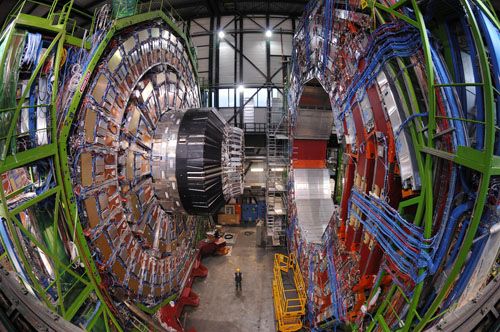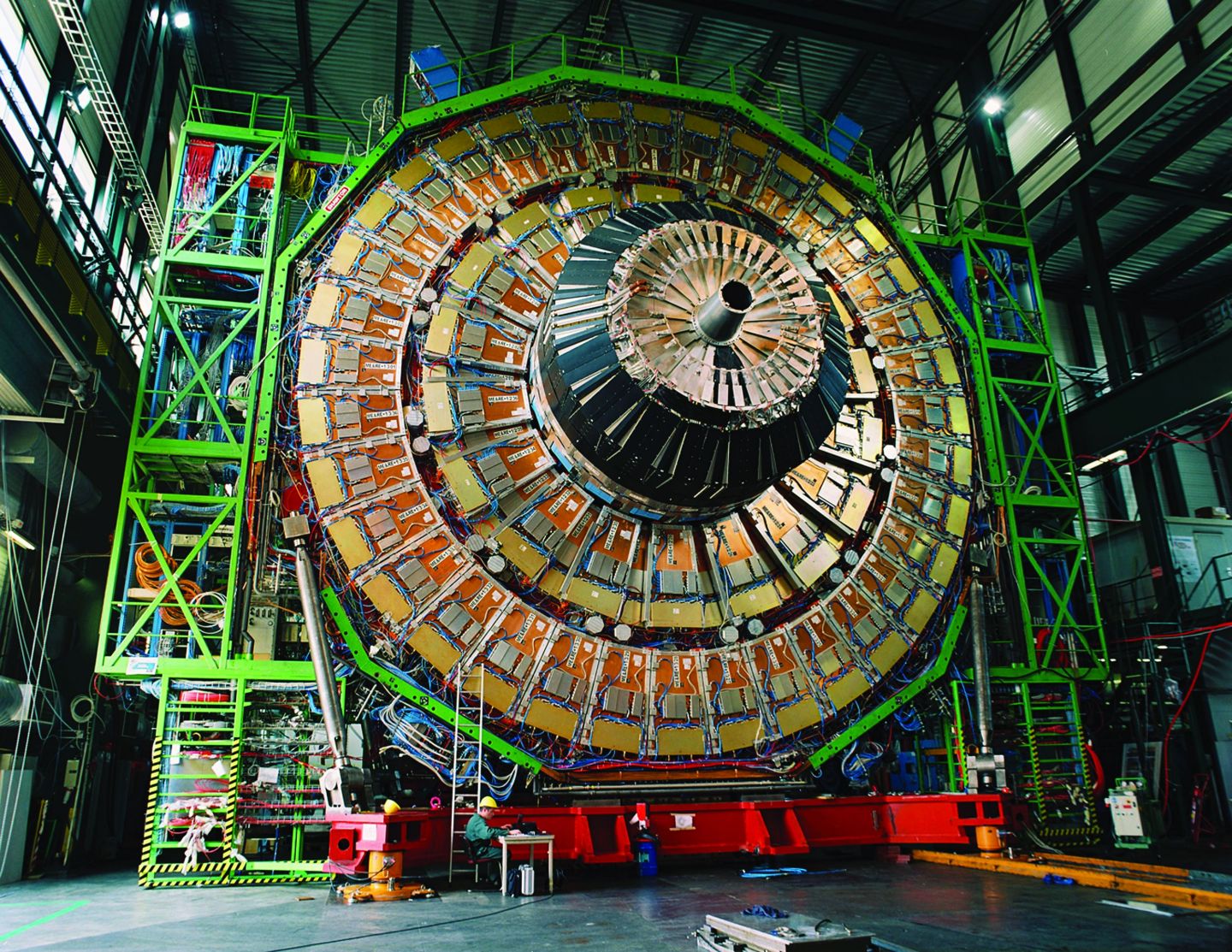Physics Professors Emanuela Barberis and Darien Wood are taking a plunge into darkness with a new NSF grant that is aimed at shedding some light on what dark matter is.
Professors Barberis and Wood have been awarded a three-year grant for research to be completed at CERN in Switzerland, the European Organization for Nuclear Research, on the Large Hadron Collider (LHC)—the world’s largest and most powerful particle accelerator used by physicists around the world to track and identify particle collisions. The collisions help identify how particles interact, and can produce particles or larger masses that were around at the time of the Big Bang.
With a team of faculty, post doctorates, graduate students, and co-op students, Barberis and Wood have a large team to work with to help begin some of their new research and analysis.
Into the Dark
First, they are interested in analyzing data produced by the accelerator to learn about dark matter—a hypothetical form of matter thought to exist based on observed motions of stars and galaxies. Visible matter, which is the matter of anything that produces or reflects light, only makes up a few percent of the matter in our universe. There is much more dark matter out there, despite being seemingly undetectable. Wood hopes that dark matter, hypothesized to be a heavy neutral particle, can potentially be created in the collider.
“There’s much more dark matter than there is familiar matter, and yet it has not been detected as a particle,” Wood said. “It’s hard because the reason it’s ‘dark’ is because it doesn’t like to interact, so you have to create it and see it disappear. You infer its presence from its absence in a sense.”
“Looking for dark matter particle candidates is something really important that we hope to have a better understanding for in a few years,” Barberis said.
Clarifying Questions
Their research will also focus on understanding more about the standard model of physics, a theory that defines the fundamental forces in the universe and interactions of elementary particles. There are parts of this theory that are not clearly explained, and Barberis and Wood are setting out to clarify them. One such scientific gray area is the mystery behind why certain particles have different masses from each other when mass is determined through particle interactions.
“With the data that it’s collected, you can look for many different things like dark matter, matter-antimatter symmetry, and more. We may have every student in our group looking at a different physics process, but we’re all using the same data, the same tools and still working together,” Wood said.
The Remodel
The last piece of this new grant incorporates funding for modifications and upgrades to the CMS, which Barberis and Wood’s group is responsible for. In 2019, the accelerator will shut down to allow physicists and engineers to get inside and work on it so it can come back a few years later with higher intensity beams, producing more data in less time.
Teamwork makes the dream work
Barberis and Wood are excited to get to work with their international team and colleagues from around the world.
“We really like that this is an international collaboration, and we’re addressing fundamental physics question,” said Barberis. “The grant lets us work with very interesting technology and its applications, and we really enjoy collaborating with others. This is very exciting for our students who have an opportunity for these real experiences and involvement at a major research lab.”

Large Hadron Collider, Photo Courtesy of CERN

